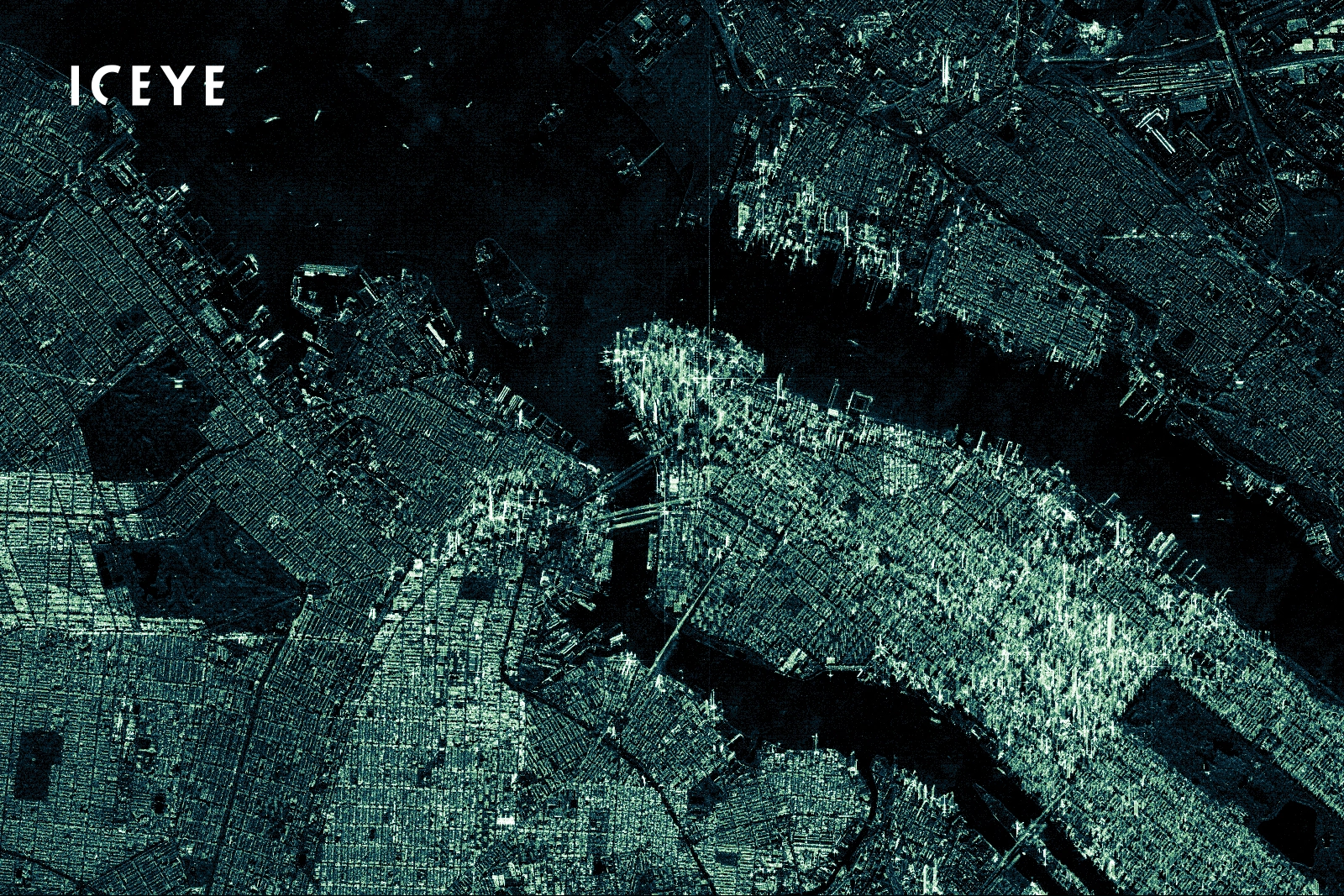Synthetic Aperture Radar (SAR) is a specific satellite that can capture imagery in all weather conditions, day or night. SAR sends a microwave radar signal to the earth’s surface to detect physical properties. Depending on the ground feature’s properties, some or all of the signal will bounce back up to the sensor creating an image of the ground.
It is a great tool for capturing images of areas of the world with significant cloud cover, where optical satellites cannot see through the clouds to the ground. SAR imagery can also be useful during severe weather and disaster management. The ability to capture imagery at night also increases how often the satellite can collect imagery.
There are various SAR sensors, which are classified based on the wavelength of their radar signal that is emitted. The different SAR wavelengths are called bands and are designated by letters (ex. X, L, P). EarthCache has X-Band SAR, which is a common type of high resolution SAR. The use cases for SAR data vary depending on the band wavelength.
When is SAR used?
Below are some example use cases for X-Band SAR:
- Top-of-canopy analysis for vegetation management. A longer wavelength (X-band is shorter than the SAR wavelengths) is needed to get information on the lower canopy on a forest floor.
- Waterbody monitoring – change in the extent of waterbodies, monitoring of wave heights
- Soil moisture measurements
- 3D modelling – SAR can be used for the generation of digital elevation models
- Ground deformation or subsidence mapping – Interferometric SAR (InSAR) technique can be used to monitor the movement of the ground which can help to generate warning systems for infrastructure instability, landslides, mine wall collapses, right of way monitoring and more.
- Oil spill detection and monitoring
- Port and Ship monitoring
- Flood monitoring – Good at detecting water and can be useful when clouds often coincide with flooding events.
Check out our partners who provide SAR data through our EarthCache-X program. Here is an example of a SAR image provided by ICEYE.






